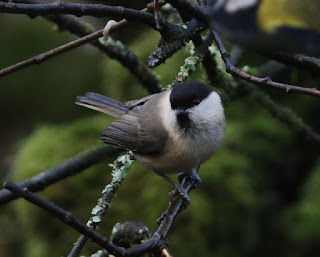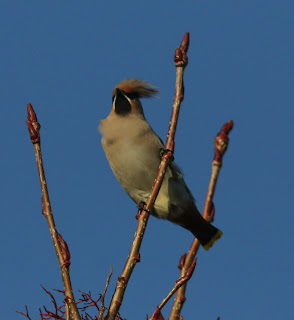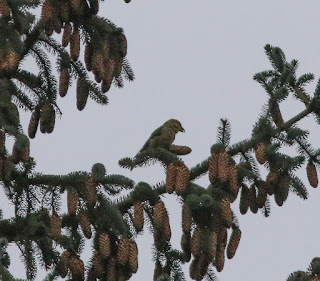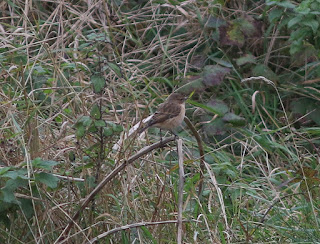... and nearby there was a first-winter Shag ... not too common in these parts ...
On the day that the General Election results emerged it seemed somehow a good idea to cross the border into Scotland ... and the Ken Dee Marshes felt remote, quiet ... and the sun shone beautifully on that lovely landscape ...
... that bizarre almost 'car alarm' style of call announced the presence of Red Kites ... and there they were ...
... Fieldfares piled out of the trees along the lane leaving just one watchful bird ...
... and an adult male Reed Bunting showed off its winter plumage ... striking but with more subtlety than its breeding plumage ...
... and then into the wet woodland with the potential for Willow Tits ... a sadly declining species ... but two birds gave wonderful views ...
... apart from the long established identification features that separate this species from Marsh Tit it was interesting to note the bill pattern - the absence of the pale spot at the base of the bill that is diagnostic for Marsh Tit was easily discerned ...
Then at Threave the high water levels created large areas of flooded marsh ...
... that were teeming with birds ...
Greenland White-fronted Geese fed among the vegetation ...
... and male Pintails performed excited displays to the single female ...
... and all the while the calls of some distant Pink-footed Geese came through the still air ...





















































